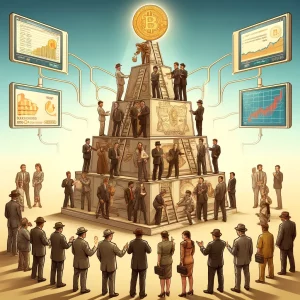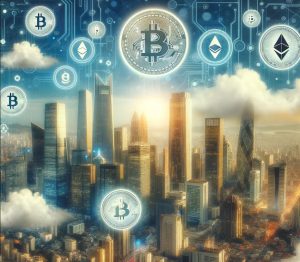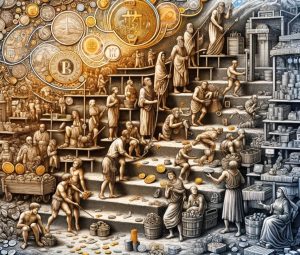Is AI art as valuable as “real” art?
4 min readTable of Contents
After a Colorado judge ruled that another award-winning artist could not claim copyright based on his use of MidJourney, a major debate has erupted over the use of artificial intelligence (AI) for artistic purposes.
In many countries, copyright is limited to humans, so anything created by machines or “mostly by machines” falls into the public domain.
While this doesn’t stop artists from using generative AI to create new and unique works of art, it does raise the question of whether or not these products can be protected by copyright.
Especially when the data sets this AI is fed contain countless hours of human creations made by other human artists without their express consent.
But before we delve into the more philosophical and social considerations, let’s take a look at the current legal developments.
The Matthew Allen case in Colorado
Matthew Allen is a digital artist who 2022 first prize at the Colorado State Fair won the “New Digital Artist” award. His artwork, aptly named “Théâtre D’opéra Spatial,” immediately sparked a heated debate among the other competitors about whether it was fair and legitimate to use AI in a competition – especially when it won.
Other artists claimed that this digital art was something between plagiarism and auto-generated content, but not something that could be considered a winning work or even a legitimate artistic creation.
However, the author responded to the criticism by saying that he never lied about how the artwork was created and that the creative process behind it was not that different from manipulating an exact image using Photoshop.
Other artists support his position by confirming that human ingenuity still plays a central role in creating such an image. In contrast, others claim that anyone with a little knowledge of prompter technique can do it.
In this regard, a skilled developer or programmer could become a better painter than a “real” painter in the near future.
Whatever the opinions may have been at the time, a year later a Colorado judge has now ruled that the work of art not protected by copyright can be.
And why? The artwork is not “human” enough; As we have already said, machines cannot have the right to copyright.
It is not the first time that US courts have made a similar decision. However, a definitive criterion for how much “human intervention” is required to define an opera, book, film or song as man-made has never been established.
How ethical is it to use AI generated art?
A significant part of the problem arises from the question of whether it is ethical to feed machines the data of human artists who have allegedly stolen property.
As we discussed in another article, several generative AIs such as Stability AI, DeviantArt and Midjourney have been sued for intellectual property theft after billions of compressed images were fed to the AI to teach them how to “create art”.
According to the artists who filed the lawsuit, their art was used to train the AI without their express consent, so what the machines now produce is a chaotic collage of individual human skills.
It is questionable whether these lawsuits will be successful, especially since most of the works of art are already in the public domain or the artists who created them have long since died.
Philosophically speaking, in the world of visual art, the line between what is ethically acceptable and what is not is a fine line.
One could easily argue that, aside from blatant plagiarism, every artist copies someone else to some extent. From “imitation is the sincerest form of flattery” to “good artists copy, great artists steal” – there is little new under the sun.
We can discuss how similar it is to modern music originalityand lacks any semblance of artistic novelty.
So how can “man-made” be enough to define a creation as true art?
The social consequences of legitimizing AI-generated art
Determining the extent to which AI-generated content can be defined as “art” is not a niche issue as it might seem at first glance.
Without a clear stance on this issue, it is only a matter of time before the most greedy companies flood the market with incredibly cheap AI content of average quality, with no real limitation or reason for doing so.
And that’s an issue that falls into the broader “AI stealing human jobs” debate in a pretty relevant way.
Being replaced by AI worries all types of artists, which has led to the current and long-lasting strike by actors and screenwriters in Hollywood.
Even if the works of art created by AI are not protected by copyright, the risk of misuse of the relative ease of creating these works could result in many people losing their jobs.
However, low quality is still low quality, and the public does not respond positively to it even when people create it. And if profit suffers as a result it’s hard to believe that companies still want to go down this path.
We have argued that the market will eventually find its equilibrium, which does not make it any less important to actively regulate this environment.
The bottom line
Art is, by definition, a fleeting, subjective force that is difficult to describe. The line between simple craftsmanship and true art is fluid; even our simplest tools like a sword or an antique hip flask can become a masterpiece when made by the right hands.
What ultimately decides what is art and what is not is how it is perceived and received by other people.
And as we enter a new era where machine-made paintings are just as enticing as those made by human hands, if not more so, there’s not much we can do.






